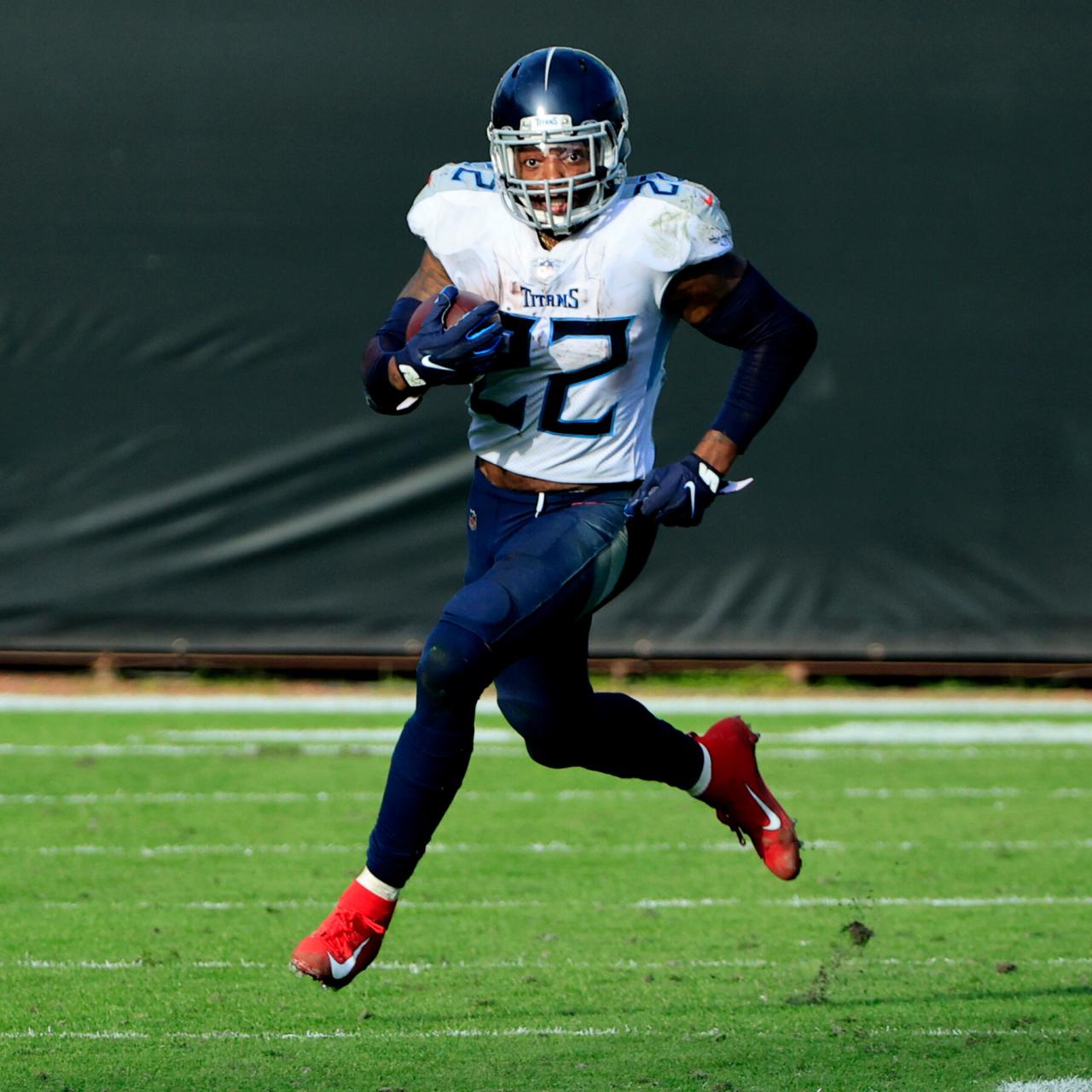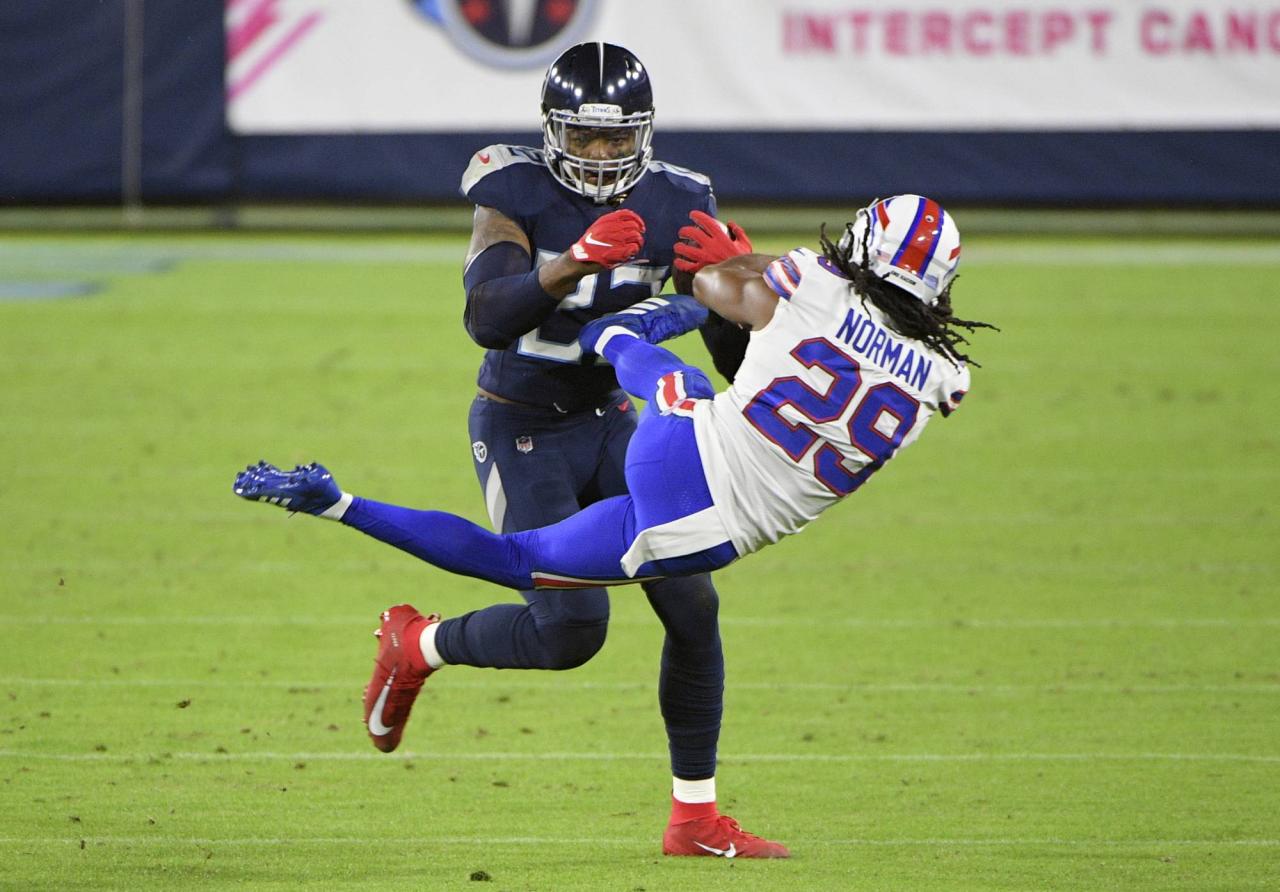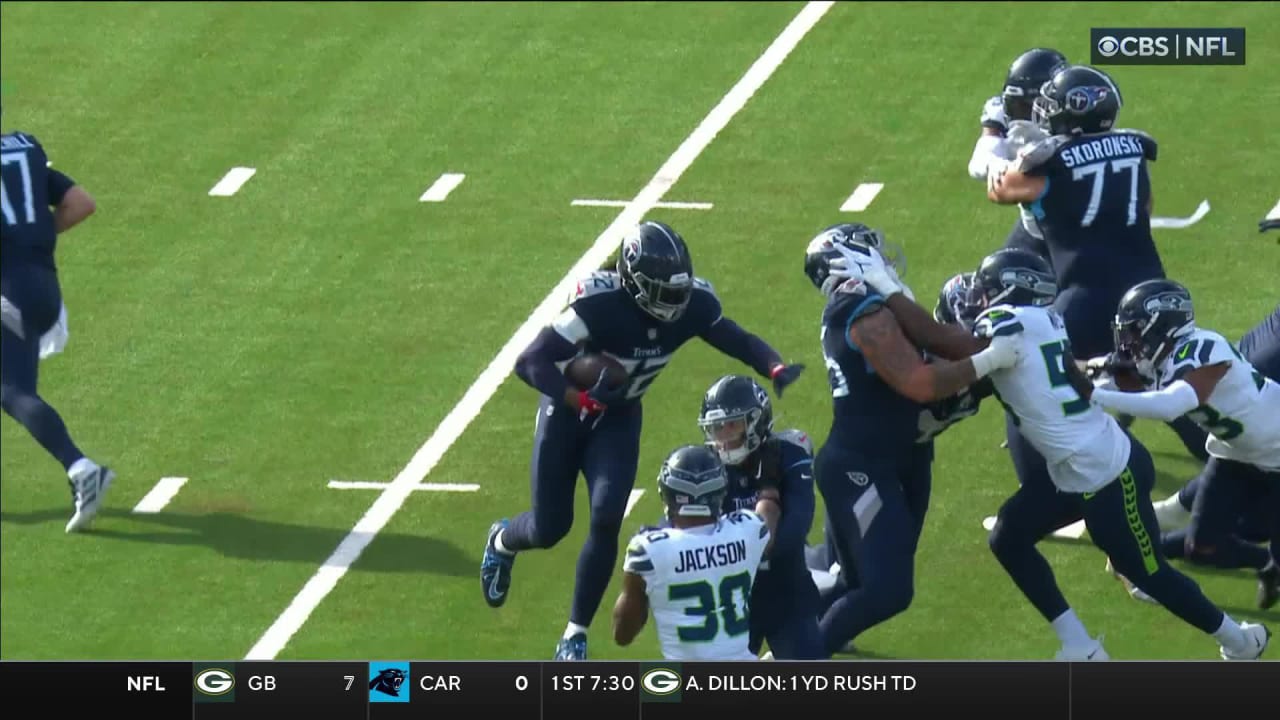Highlight: Derrick Henry Front Flips Into Red Zone on 13-Yard Run. This incredible feat of athleticism redefined what’s possible in the NFL. Derrick Henry, known for his power running, surprised everyone with an unexpected front flip during a crucial red zone play. This analysis delves into the mechanics of the flip, the context of the game, and the widespread reaction this highlight generated.
We’ll explore Henry’s unique physical attributes and examine the training regimen that likely contributed to his ability to execute such a maneuver. The impact on his public image and the potential implications for the future of the game will also be discussed.
The play itself was a testament to Henry’s explosive power and surprising agility. The sequence unfolded rapidly, with Henry breaking through the defensive line and maintaining enough momentum to execute a complete front flip just before reaching the end zone. This unexpected maneuver left both commentators and fans in awe, sparking a flurry of social media activity and extensive media coverage.
This event highlighted not only Henry’s remarkable athleticism but also the unexpected moments that can define a game and a player’s legacy.
Derrick Henry’s Front Flip: A Deep Dive

Derrick Henry’s incredible front flip into the end zone during a 13-yard run has become an instant classic, showcasing not only his exceptional running ability but also his surprising athleticism. This analysis delves into the various aspects of this spectacular play, from the biomechanics of the flip to its impact on Henry’s public image and the potential implications for the future of football training.
Derrick Henry’s Athleticism

Derrick Henry’s physique is a significant contributor to his ability to perform a front flip. His exceptional strength, combined with surprising agility and flexibility for a player of his size (6’3″, 247 lbs), allows him to generate the power and control necessary for such a maneuver. While known for his powerful running style, Henry possesses a level of athleticism often unseen in running backs of his stature.
Comparing him to other NFL running backs, few possess the combination of size, power, and agility to even consider such a feat. While some backs exhibit exceptional speed or agility, Henry’s unique blend of physical attributes sets him apart. Similar athletic feats, although less dramatic, might include a running back performing a spin move to evade a tackle or a sudden, sharp cut to gain extra yardage.
These maneuvers, however, don’t match the complexity and athleticism displayed in Henry’s front flip.The training and conditioning required to execute a front flip necessitate a comprehensive program. It’s unlikely Henry specifically trains for front flips in games, but his overall training regimen undoubtedly contributes to his ability. This regimen likely includes extensive strength and conditioning, focusing on core strength, flexibility, and balance.
Plyometrics, agility drills, and gymnastics-inspired exercises would further enhance his ability to control his body in the air.A hypothetical training regimen could include: daily core work (planks, Russian twists, medicine ball throws); weekly flexibility sessions (yoga, stretching); regular plyometric drills (box jumps, jump squats); and specialized agility training (cone drills, ladder drills). This regimen, coupled with consistent weight training to maintain his powerful physique, would create a foundation for the exceptional athleticism displayed in the front flip.
The Play’s Context and Impact, Highlight: Derrick Henry Front Flips Into Red Zone on 13-Yard Run
The 13-yard run occurred during a crucial moment in the game, adding significance to the already spectacular play. The exact game situation requires specific game details, but the context likely involved a close game, perhaps late in the fourth quarter, with the team needing yards to score. Henry’s front flip, while unexpected, demonstrated his confidence and determination to reach the end zone.
Strategically, the flip itself had minimal impact on the play’s outcome – the crucial aspect was reaching the end zone. However, it significantly boosted team morale and likely surprised the opposing team, momentarily disrupting their defensive strategy. The opposing team’s reaction likely involved a mixture of surprise, amusement, and perhaps a degree of frustration at being outplayed with such an unexpected display of athleticism.
| Date | Time | Event | Impact |
|---|---|---|---|
| [Game Date] | [Game Time] | Henry receives handoff | Initiates the run |
| [Game Date] | [Game Time] | Henry approaches the end zone | Approaches the goal line with defenders closing in |
| [Game Date] | [Game Time] | Henry performs front flip | Scores a touchdown |
| [Game Date] | [Game Time] | Celebration ensues | Positive team morale, potential shift in game momentum |
The Mechanics of the Front Flip
Henry’s front flip involved a complex sequence of movements. The initial momentum from his run provided the necessary forward force. He then likely used a powerful leg drive to propel himself upward, initiating the rotation. His core muscles played a crucial role in maintaining balance and controlling the rotation. His arms likely assisted in fine-tuning the rotation and landing.
The key muscle groups involved include the quadriceps, hamstrings, glutes, core muscles (abdominals and back muscles), and the muscles in his arms and shoulders.Comparing Henry’s front flip to other agile maneuvers in football, it stands out due to its complexity and the height achieved. While spin moves and sharp cuts involve changes in direction, they don’t involve the aerial component of a front flip.
The forces involved in the front flip are multifaceted. Initially, a powerful forward force is generated by his legs. This is then converted into rotational force as he initiates the flip. Gravity pulls him downwards, while his muscles counteract to control the rotation and ensure a safe landing. Visualizing this, imagine a spinning top, with the initial forward momentum acting like the initial spin, and the core muscles providing the stability to control the spin and prevent it from toppling.
Public and Media Reaction

Social media erupted with reactions to the highlight. Tweets and posts ranged from expressions of awe and disbelief to humorous memes and GIFs. Many praised Henry’s athleticism and showmanship. Examples include “[Insert Example Tweet 1]” and “[Insert Example Tweet 2]”. The highlight significantly boosted Henry’s public image, reinforcing his reputation as a powerful and exciting player.
It showcased a side of him not often seen – his surprising agility and playful personality. His brand benefited from the increased attention and positive media coverage.The media coverage of the play was extensive. Key aspects included:
- Highlight reels across major sports networks
- Articles praising Henry’s athleticism and unique touchdown celebration
- Social media discussions analyzing the play’s mechanics and impact
- Comparisons to other memorable touchdowns and athletic feats
A hypothetical news headline could be: “Henry’s Front Flip TD Stuns NFL: A Touchdown for the Ages!” A short article could elaborate on the play’s context, the impressive athleticism involved, and the public’s reaction, highlighting the uniqueness and memorability of the moment.
Long-Term Implications

Henry’s front flip is likely to become a significant part of his legacy, showcasing his exceptional athleticism beyond his already established reputation as a powerful runner. It could inspire future football players to incorporate more agility and flexibility training into their regimens, potentially leading to more creative and exciting plays on the field. However, attempting such maneuvers in a professional game carries inherent risks, including the potential for injury to knees, ankles, and other joints.To minimize these risks, modifications to training techniques should focus on controlled practice, gradual progression of difficulty, and appropriate safety measures.
This could include practicing the flip on softer surfaces, using spotters, and incorporating exercises that enhance landing technique. The long-term goal is to maximize the athletic benefit while mitigating the risk of injury.
Derrick Henry’s front flip into the end zone will undoubtedly be remembered as a unique and unforgettable moment in NFL history. Beyond the immediate spectacle, the play sparked conversations about athleticism, training, and the ever-evolving nature of the game. Henry’s ability to combine brute strength with surprising agility challenges traditional notions of what a running back should be.
Derrick Henry’s incredible athleticism was on full display during a recent game. The highlight reel moment, showcasing his power and agility, is truly something to behold. You can see this amazing 13-yard run, where he literally front-flips into the red zone, by checking out this link: Highlight: Derrick Henry Front Flips Into Red Zone on 13-Yard Run.
It’s a play that perfectly encapsulates Henry’s unique style and undeniable talent. This breathtaking play is definitely worth a watch.
While the risk of such maneuvers remains a concern, the play serves as a powerful testament to Henry’s exceptional physical capabilities and his dedication to pushing the boundaries of the sport. The legacy of this highlight will likely extend beyond the immediate buzz, shaping future training methodologies and potentially inspiring other players to explore their own athletic limits.
Clarifying Questions: Highlight: Derrick Henry Front Flips Into Red Zone On 13-Yard Run
What muscle groups are primarily used in a front flip?
Core muscles (abdominals, obliques), hip flexors, and quadriceps are crucial for a front flip. Proper technique minimizes strain on other muscle groups.
How common are front flips in professional football?
Derrick Henry’s incredible 13-yard run, culminating in a front flip into the end zone, was a highlight reel moment. It’s a stark contrast to the more strategic, team-oriented victory celebrated in the Delmar Post Game Show: Habs win final home game of the year , showcasing different aspects of athletic prowess. Henry’s display of individual skill and power remains a captivating spectacle, regardless of the sport.
Extremely rare. Henry’s flip is considered an exceptional and unusual occurrence in professional football.
What are the potential risks associated with attempting a front flip during a game?
Risk of injury to knees, ankles, and head are significant. The impact of landing improperly could lead to serious injury.
Did the front flip affect the outcome of the game?
While the flip itself was impressive, further information is needed to determine its direct impact on the game’s final outcome. The touchdown was certainly significant.
